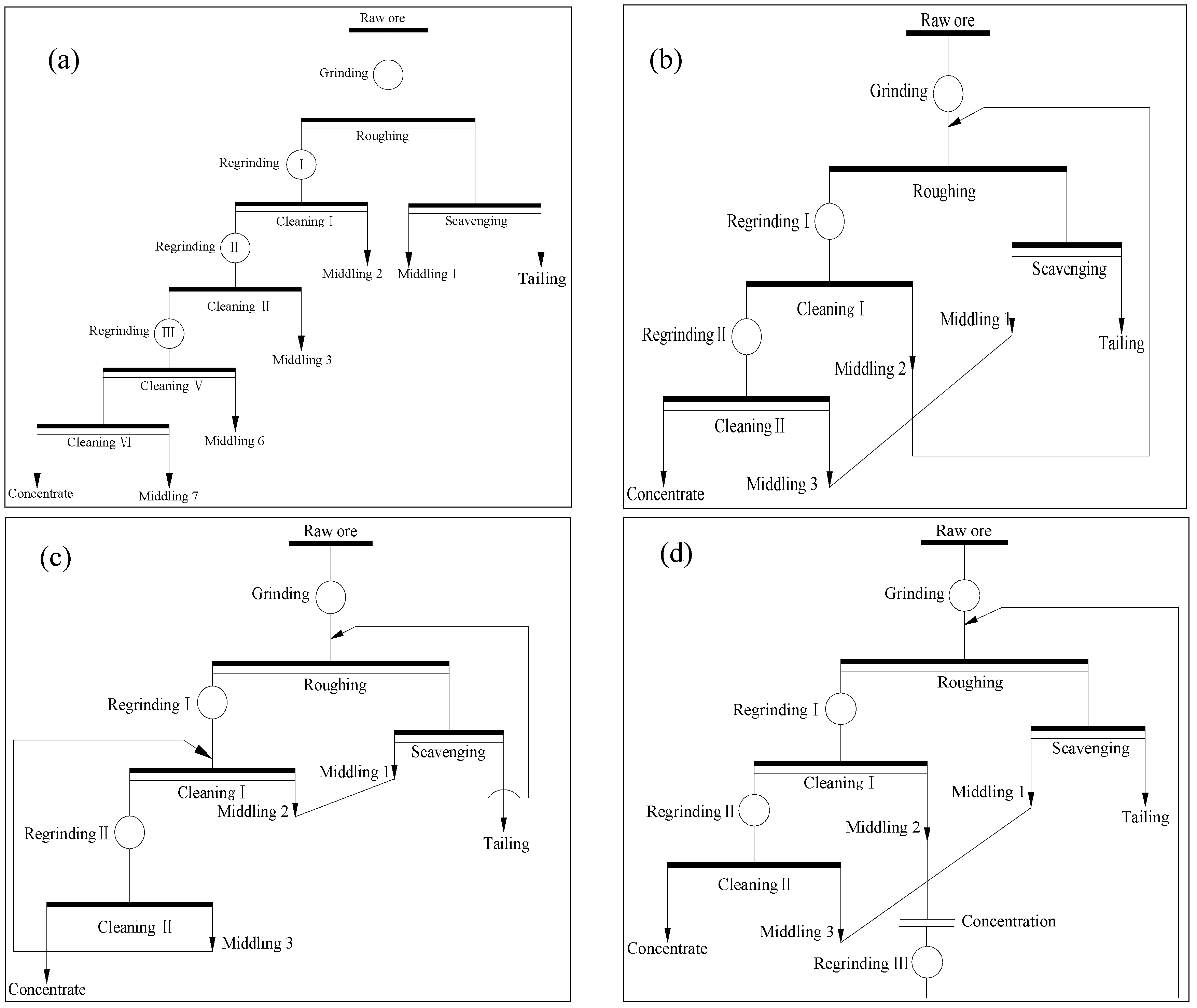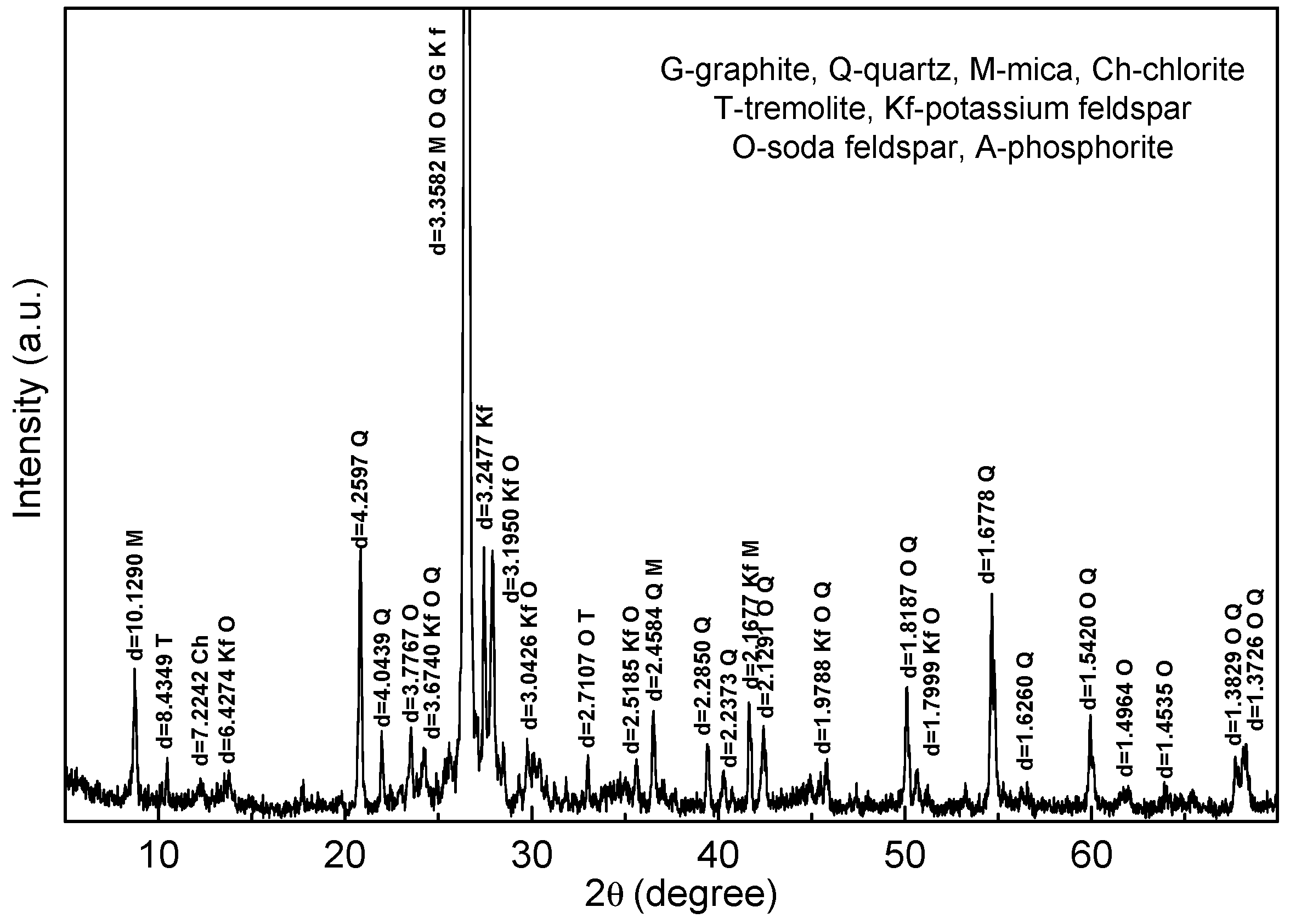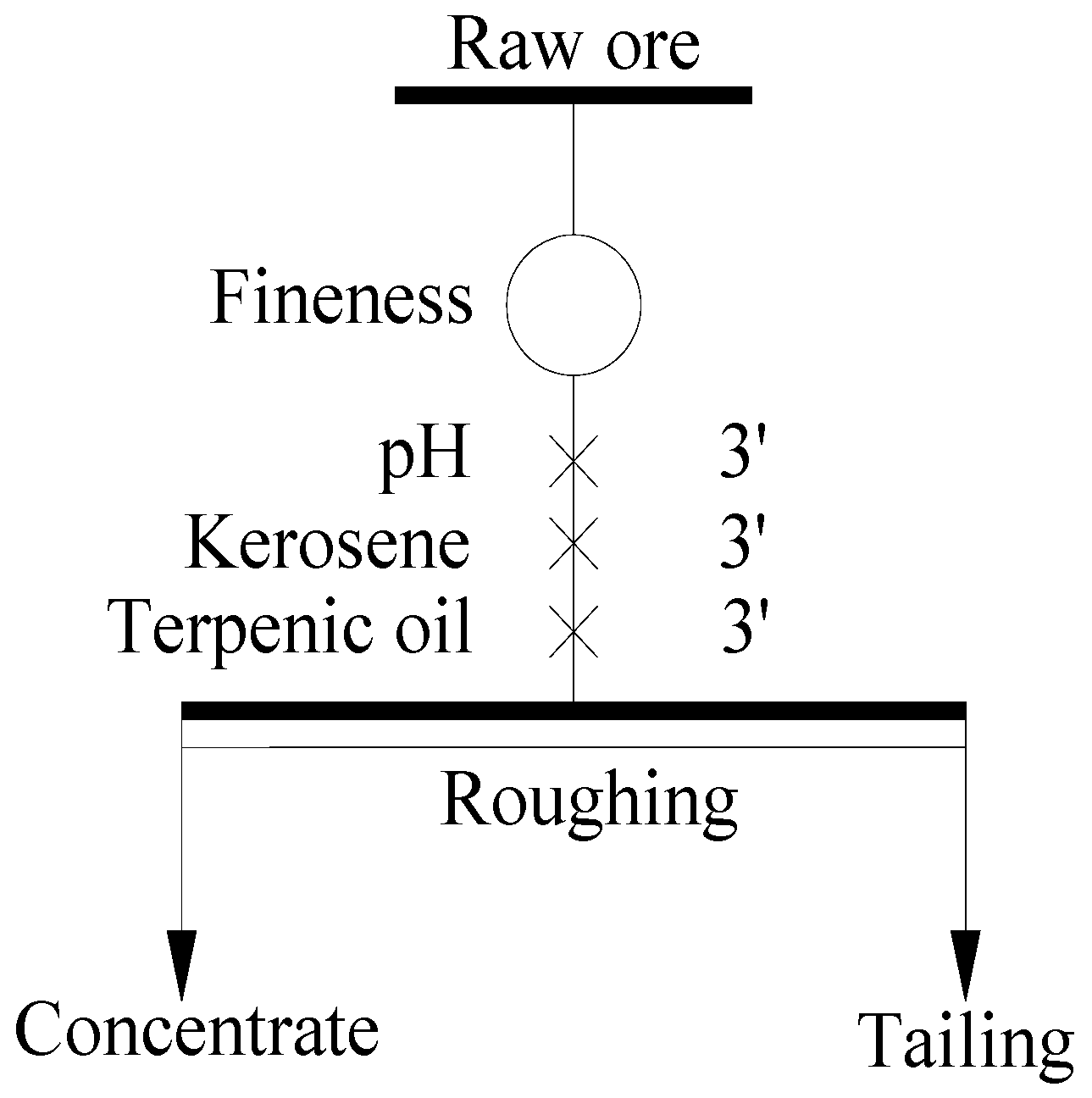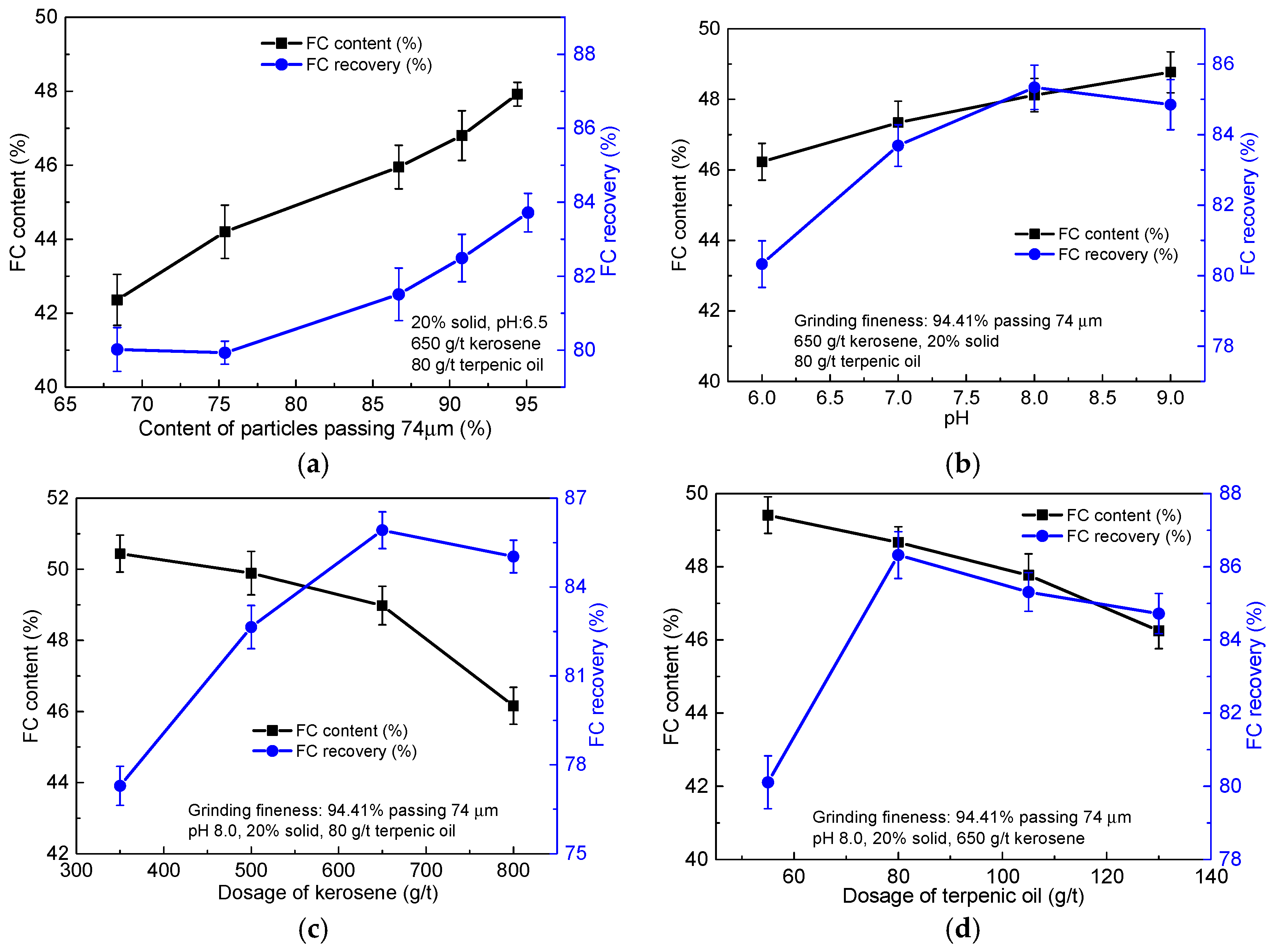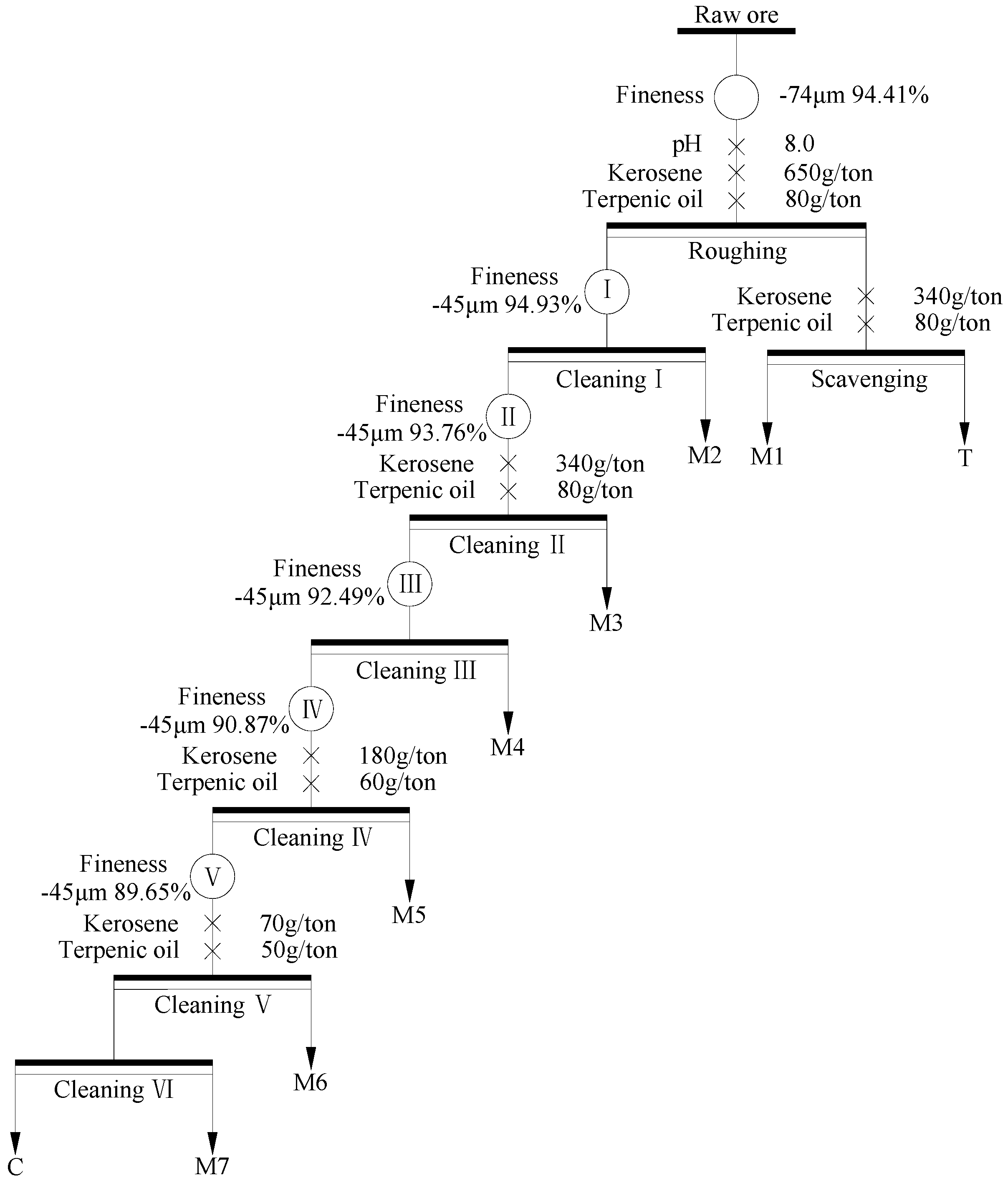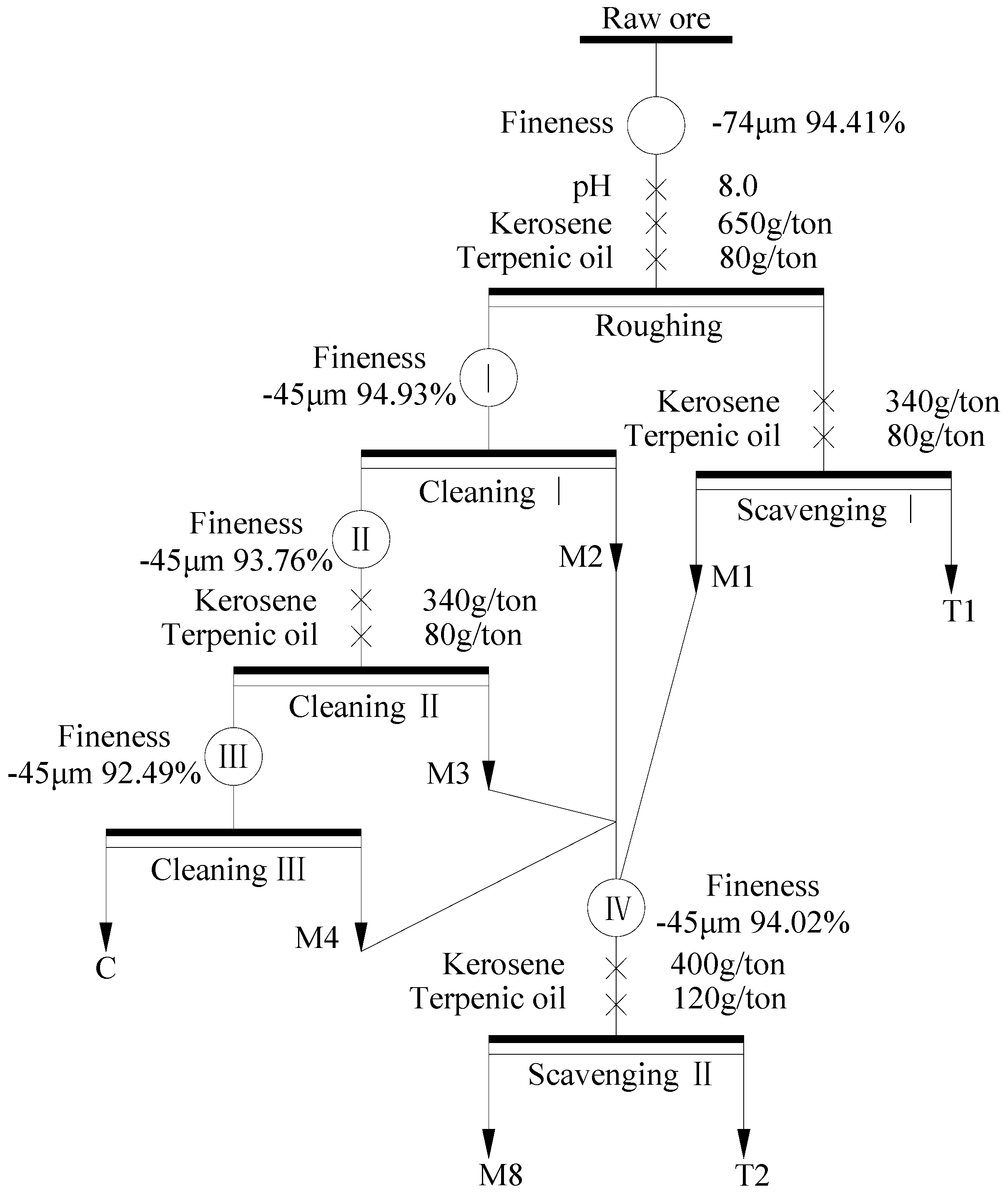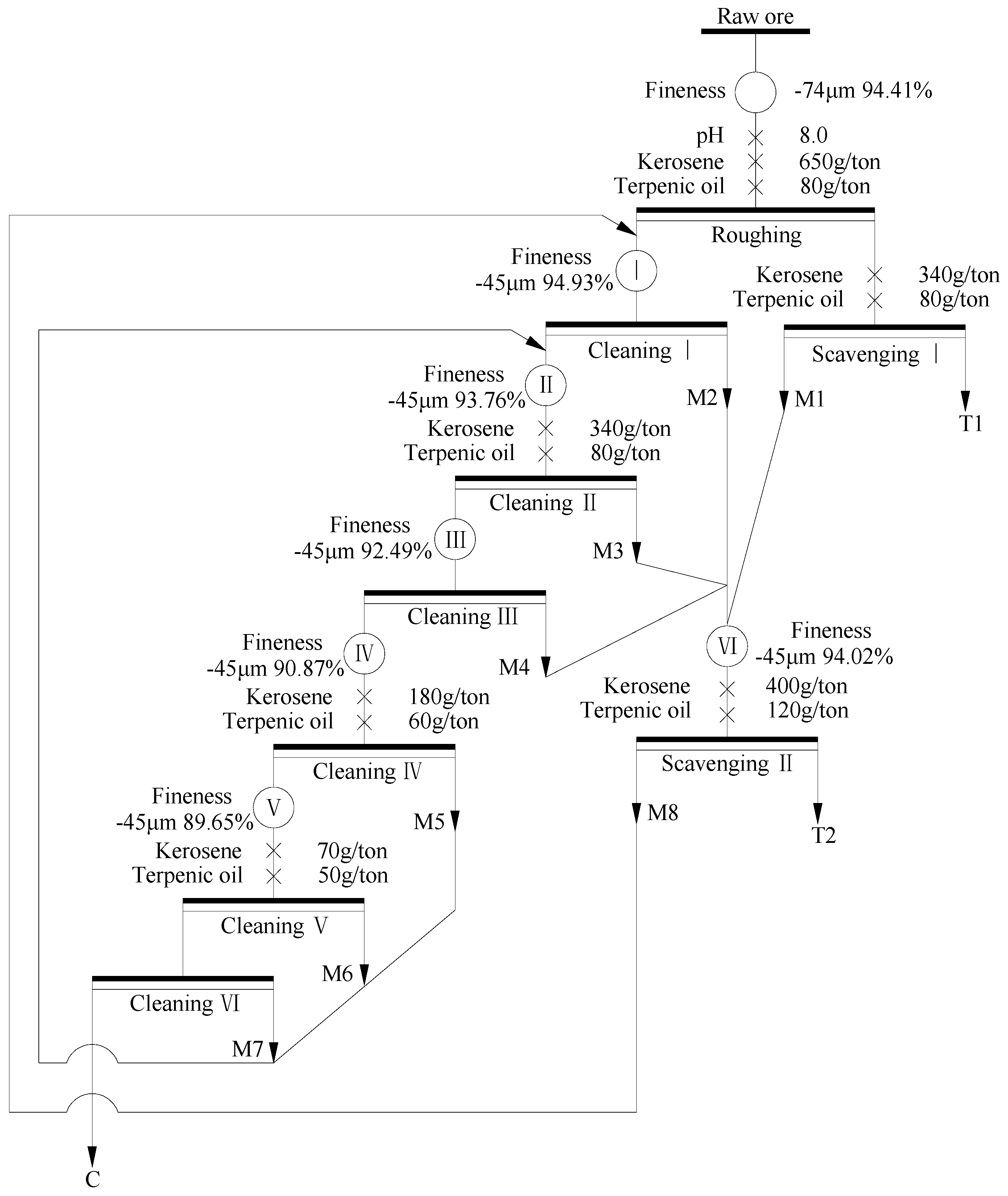Graphite is one of the three forms of naturally found crystalline carbon [
1]. In general, natural graphite was classified as flaky, lump and amorphous graphites according to the difference of crystalline morphology [
2,
3,
4]. Graphite, considered to be one of the most important non-metallic minerals, is widely applied in foundry facings, refractories, lubricants, pencils, batteries, brake linings, bearings, conductive coatings and crucibles due to its unique physical and chemical properties [
5].
Flaky graphite can be easily purified by flotation due to its high natural hydrophobicity [
6,
7]. Generally, the flaky graphite ore was purified via multi-stage grinding-flotation (as shown in
Figure 1a) to prevent the graphite flakes from being destroyed during the following regrinding, and a large amount of middling was naturally produced in the process [
8,
9,
10]. In the typical technique for graphite beneficiation, the treatment techniques for the graphite middlings contain concentrated returning (
Figure 1b), returning step-by-step (
Figure 1c), individual process (
Figure 1d), etc. [
11,
12]. Concentrated middlings returning can simplify the flowsheet, but resulting in an adverse effect on the flotation when the amount of middling is large or great differences exist in the property of middlings [
13]. Returning middlings step-by-step is adapted to enhance the recovery of the graphite ore with poor floatability [
14]. It can dramatically reduce the amount of returning middlings, extra supplementary water, and the loads of concentration, rougher and scavenger, which benefits to the increase of the graphite recovery. However, when more mineral combinations exist in the middlings or the pulp concentration is high, the technique of returning middlings step-by-step can easily lead to a decline of the fixed carbon (FC) of the final concentrate [
6]. Individual process of middling is to merge all or part of the middlings and process individually. The merged middlings can directly discard, directly refloat or individually regrinding and refloat according to their different properties [
15]. The advantage of individual process is that it can reduce the amount of the circulating middlings, relieve the loads of rougher and scavenger, benefit to lower the FC content of tailing and improve the recovery. It is appropriate for the ore with graphite intercalated in the aperture of gangue minerals or wrapped by gangue minerals [
16]. Specifically, the residual graphite ores present the characteristics of poor, miscellaneous and fine due to the excessive consumption [
17]. The above methods for the treatment of middlings cannot efficiently recover the fine flaky graphite in the residual graphite ores individually, and the combined multiple treatment of middlings would be a potential method.
In this work, X-ray powder diffraction (XRD), X-ray fluorescence (XRF) and optical microscope were used to analyze the composition, flake size of graphite and symbiotic way of the graphite and gangue minerals. The optimum experimental parameters of rougher flotation were determined by a series of single-factor experiments. And a combined multiple treatments for the middlings was first proposed to increase the recovery of the fine flaky graphite based on the relationship of graphite with the associated gangue minerals.
